How To Properly Water Plants: 12 Tips & Tricks
-
Greg Iacono
- Last updated:
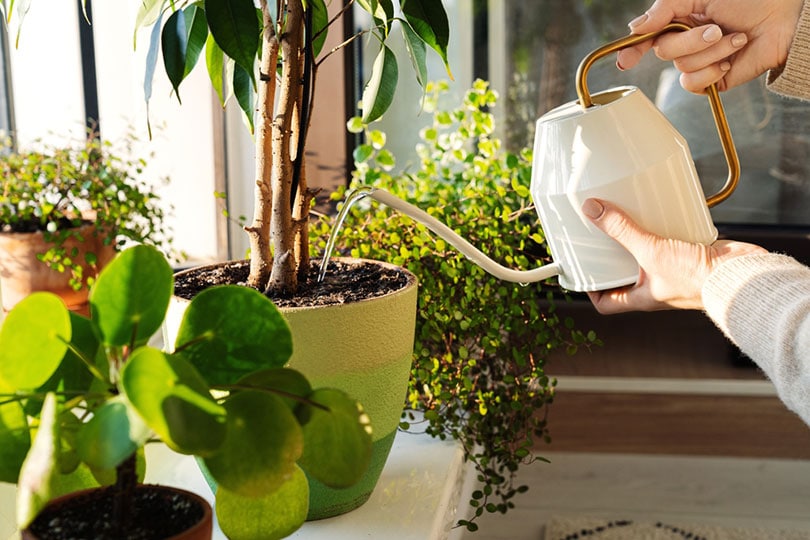
Plants are one of life’s great pleasures and bring color, fresh air, and beauty into even the blandest places. If you own plants (or want to), one of the most critical factors is how and when to water them. It might seem easy, and for some plants, it truly is, as they can live with very little water. However, many people accidentally damage or kill their plants because they don’t water them correctly. To help, we put together a list of 12 tips and tricks you can use to ensure you water your plants perfectly and on time, every time.

The 12 Tips & Tricks to Water Your Plants Properly
1. Don’t Water the Leaves of your Plants
Many people make the common mistake of watering their entire plant, including the leaves, roots, and flowers. Instead, they should avoid the leaves and put the water directly on the soil. Water can cause the leaves to rot, which can then cause bacterial and fungal infections. To avoid these problems, water the soil instead of the leaves.
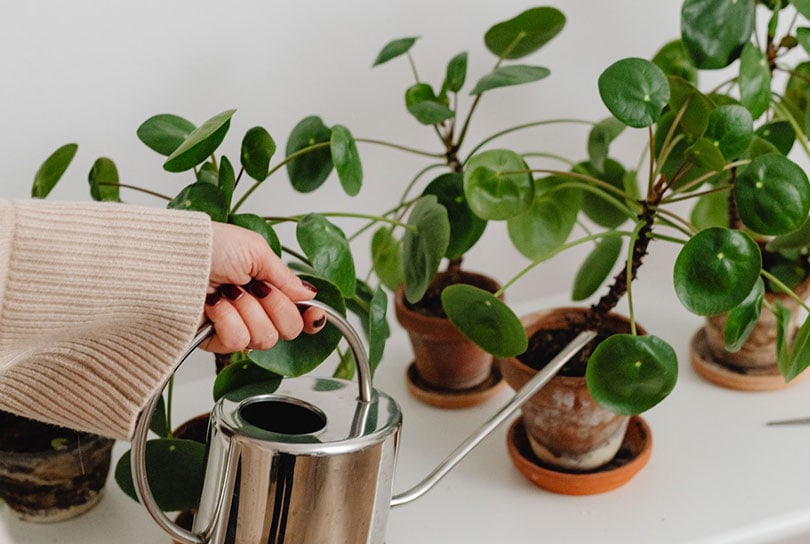
2. After Watering a Potted Plant, Dump Out the Excess Water
Have you ever stepped in a puddle with shoes on and soaked your foot, sock, and shoe completely? As with the leaves, too much water can cause your plant’s roots to rot, eventually killing it. After watering, wait a few minutes to let the water drain into the saucer under the pot. Once it does, dump the water into the sink so your plant doesn’t stay wet all day.
3. Water Outdoor Plants Early in the Morning or Late in the Afternoon
This tip is essential for all home gardeners. Water sprayed on hot soil evaporates very quickly in the heat of the day, especially in the late morning and early afternoon. In the early morning, however, the soil is much cooler, so the water evaporates less quickly.
The same can be said for the soil in the late afternoon (although less so) after things have cooled down. For this reason, watering your outdoor plants should never be done in the middle of the day.
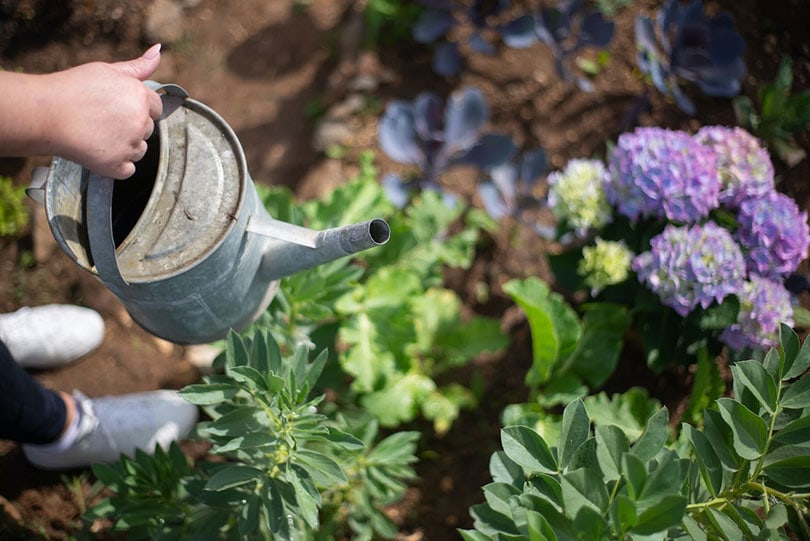
4. The Right Soil Makes a Huge Difference
Different plants have different soil requirements. For example, cacti and succulents need soil that drains faster and keeps their roots relatively dry. Vegetables need soil that holds water longer to get enough before it evaporates.
Many plants are in the middle and need soil that will stay moist but drain well. Choosing suitable soil is thus essential, but how do you do that? The labels on soil products usually state the types of plants they are perfect for, making it very easy to choose.
5. Choose Garden Containers Larger than 10 Inches in Diameter
One mistake many gardeners make when choosing containers for potted plants is they choose one that’s far too small. Sure, a succulent can go in a tiny pot and be fine for quite a while, but an outdoor plant requires more space.
That’s why, when buying containers for outdoor plants, you should always go larger than 10 inches (25 centimeters). The bigger the container, the more space your plant’s roots will have to grow. Also, a bigger pot holds more soil, moisture, and nutrients for your plant.
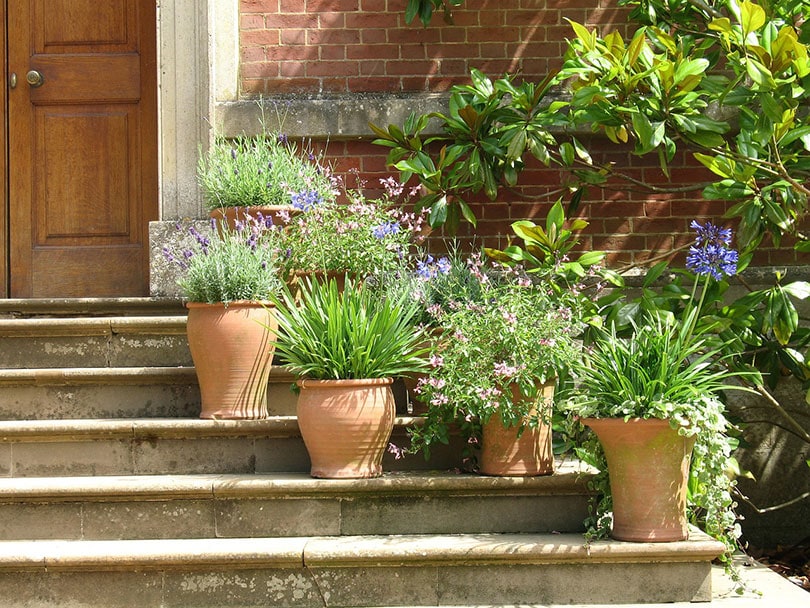
6. Water Should Drain Out of the Holes at the Bottom of the Pot
When watering your plants, you must water them deeply and thoroughly. The question is, how do you know if you’ve watered them deeply and thoroughly enough? When water starts flowing out of the drainage holes in the bottom of the pot or container, you’ve watered your plants enough and can stop watering them for the day.
7. Don’t Count on Rain to Water Your Plants
Depending on where you live, you might get a little, a lot, or a moderate amount of rain. Even a heavy rainstorm might not penetrate the soil below if you have older, mature plants in containers with thick foliage. The leaves often behave like a parasol, keeping the ground underneath surprisingly dry. The solution is to check to see if your plants have received enough water after heavy rain.
8. One Watering per Day Might Not Be Enough
If you live in a dry, windy, and hot area, you might need to water your plants more than once daily. Also, using terra cotta, coir, or metal containers can make the water evaporate more quickly. It’s also why larger containers are better than smaller ones, as seen in Tip #5. Watering twice a day might be necessary if your plants are drying out too quickly.
9. Use a Watering Wand When Possible
A watering wand is a special device you attach to a garden hose. It’s a long tube or pipe that connects to the hose on one end and a specialized nozzle on the other. Most watering wands are between 1 and 3 feet (30 to 90 centimeters) in length. Watering wands mimic rainfall and are slower and gentler than regular spray nozzles.
They also let you reach the soil rather than the leaves, which we now know is bad for your plants. Lastly, watering wands help you get to plants that are hard to reach. You can find watering wands at any nursery or home improvement store for less than $30.
10. Broadcast Sprinklers Are an Inadequate Watering Tool
A broadcast sprinkler is one of the most inefficient tools to water your outdoor plants. On a hot, windy day, a large portion of the water being sprayed by a broadcast sprinkler never makes it to the soil or your plants! Instead, it evaporates first, wasting water and leaving your plants thirsty. The solution is to water your plants using a simple garden hose and sprayer.
11. Never Use Treated, Softened Water on Your Plants
If your home has a water softener, you should avoid using the water it creates to water your plants. Water softeners change the mineral levels in the water, which, in time, can also change them in your plants. They remove magnesium and calcium from the water, which plants need to thrive.
They also put more sodium and potassium in the water, which can be too much for certain plants. However, you can use water from an outdoor hose not connected to the same piping system as your water softener.
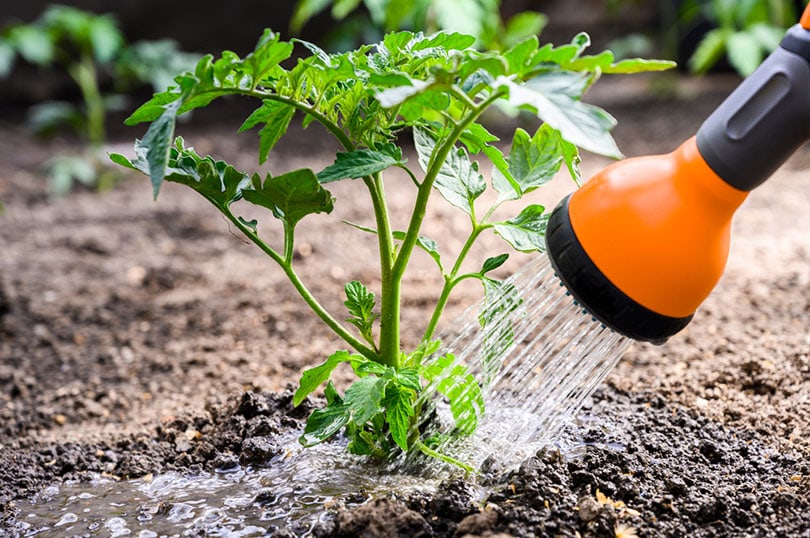
12. Purchase a Soil Moisture Gauge
Using a soil moisture gauge is one of the easiest methods of determining if your plants have enough water. They’re available at nurseries and garden centers and cost around $25. What’s great about them is you can stick them directly in the plant’s soil and, almost instantly, tell if it’s too wet, too dry, or just right.
The beauty is that when you have a moisture gauge, all the guesswork of watering is removed. You won’t need to guess or try to remember the instructions found on that little plastic plant tag.

Final Thoughts
Although watering your plants seems simple, they can suffer if you don’t do it properly. Not watering the leaves of your plants is a big problem that likely surprised many readers. You can’t overlook the wonders of a watering wand and soil moisture gauge. Plus, the time of day, type of soil, and even the container all play a vital role. Best of luck watering all your plants and keeping them happy, healthy, and beautiful.
- https://www.millcreekgardens.com/how-to-properly-water-indoor-plants/
- https://www.gardena.com/int/garden-life/garden-magazine/10-golden-rules-for-watering/
- https://bloomscape.com/plant-care/how-to-water-indoor-plants-correctly/
- https://www.thespruce.com/watering-plants-in-containers-847785
- https://www.bobvila.com/articles/watering-plants/
- https://www.health.state.mn.us/communities/environment/water/factsheet/softening.html
- https://spokengarden.com/146-2/
- https://www.hgtv.com/outdoors/gardens/planting-and-maintenance/the-proper-way-to-water-your-garden
Featured Image Credit: BeautyStars, Shutterstock
Contents